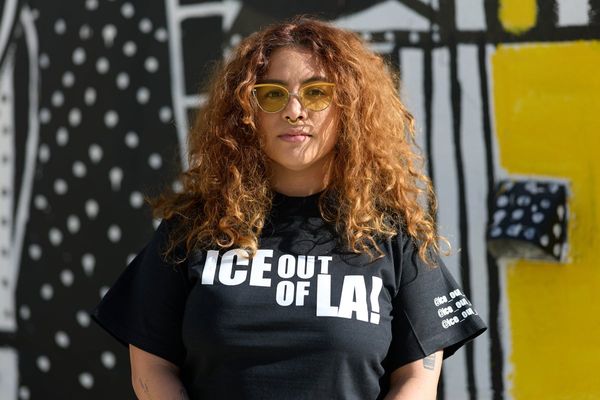
Is there such a thing as a hypoallergenic cat breed? While it's true that some breeds, like the Sphynx and Siberian, may trigger pet allergies slightly less, no feline is truly suitable if you're allergic to cats.
Expert vet Dr MacMillan explains: "It’s a common misconception that cat allergies are triggered by cat hair – they’re actually triggered by an antigen called Fel d 1, which is a protein found in their saliva and the secretions on their skin. This means that cats who don’t shed much hair can still trigger allergy symptoms."
However, by choosing a cat breed that doesn’t shed as much, you may reduce the amount of allergens spread by their hair. Some breeds, like the Balinese, also produce less of the Fel d 1 antigen responsible for flare-ups. Below, we've listed 12 breeds that may be more suitable for pet parents with allergies.
Hypoallergenic cat breeds
1. Balinese
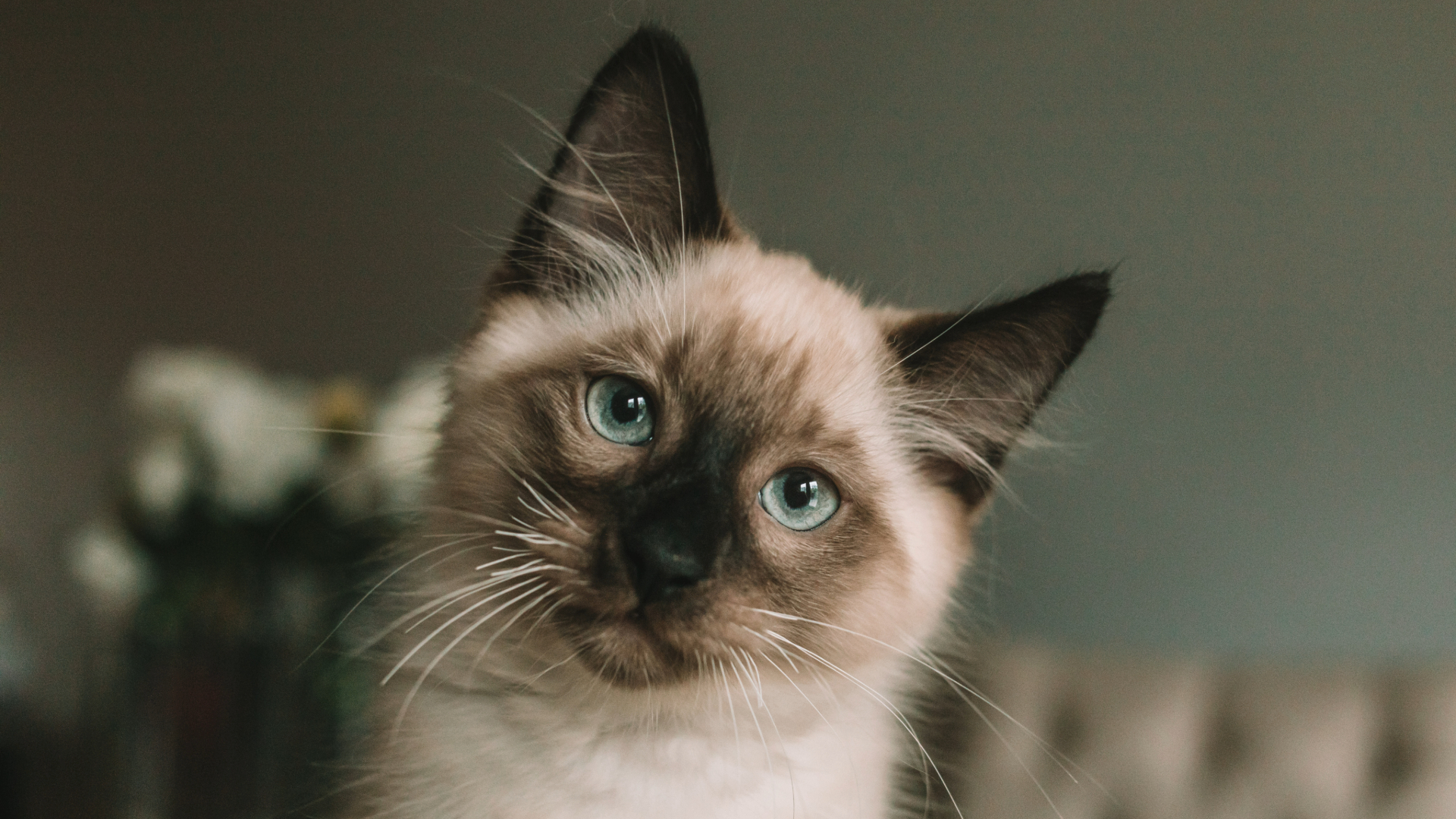
Known as the long-haired Siamese, this elegant breed shares many of the same features, including stunning blue eyes and a beautiful, soft coat. While they do need weekly brushing, the Balinese has a single-layer coat and so does not shed a lot.
It also produces less of the Fel d 1 protein than other cats, so you can spend more time playing with this fun-loving feline. Similar to the Siamese, the breed is a curious, playful, and chatty companion.
2. Javanese
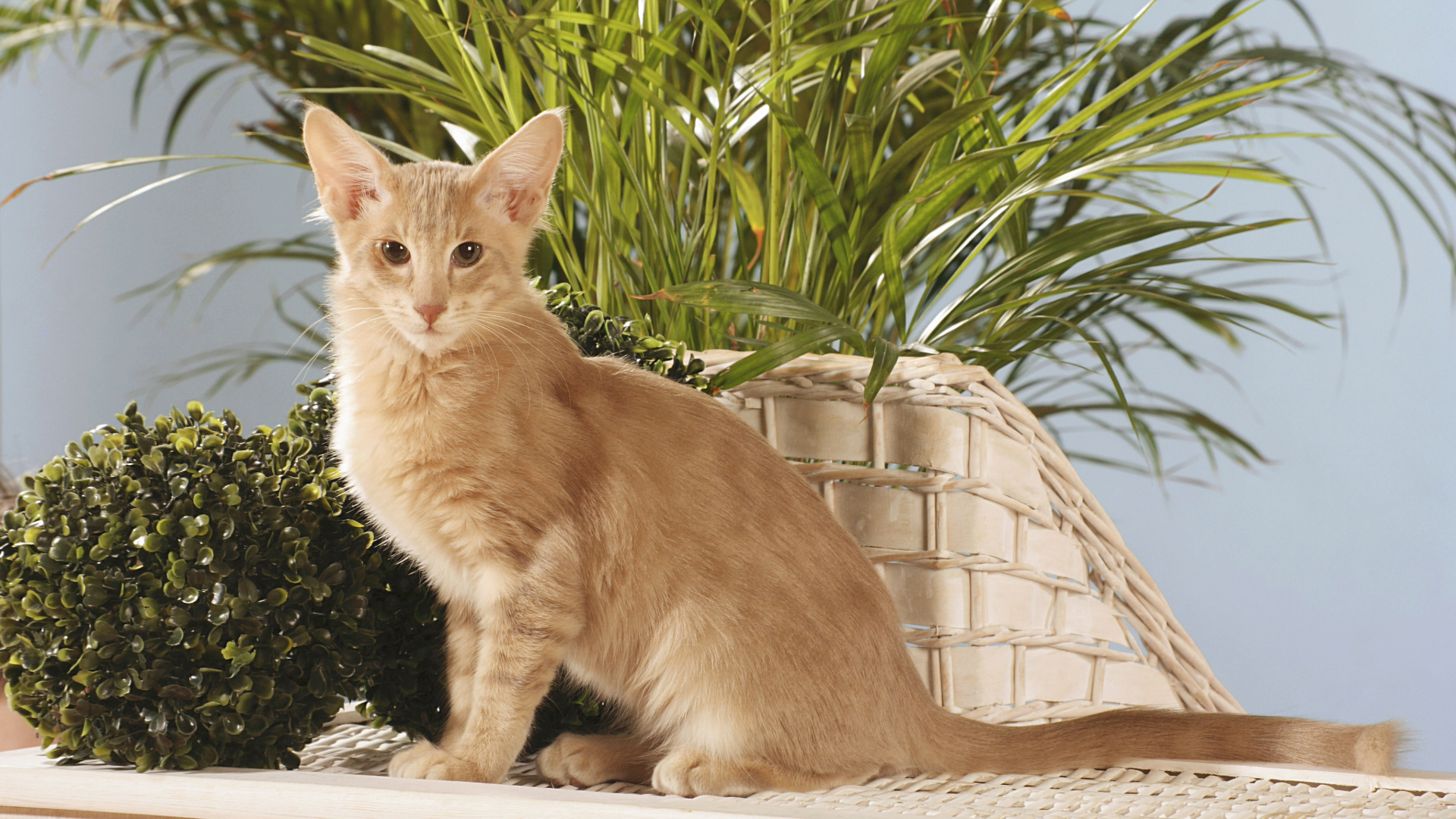
While cats can have up to three layers of fur, the Javanese is another breed with no undercoat (just one layer), which means it sheds less and is more allergy-friendly. The long-haired breed is also similar to the Siamese.
The playful cat will follow you around wherever you go, trying to be helpful. While not as vocal as the Siamese, they still like to talk, and they’re intelligent cats, which makes them one of the best cat breeds for families.
3. Devon Rex
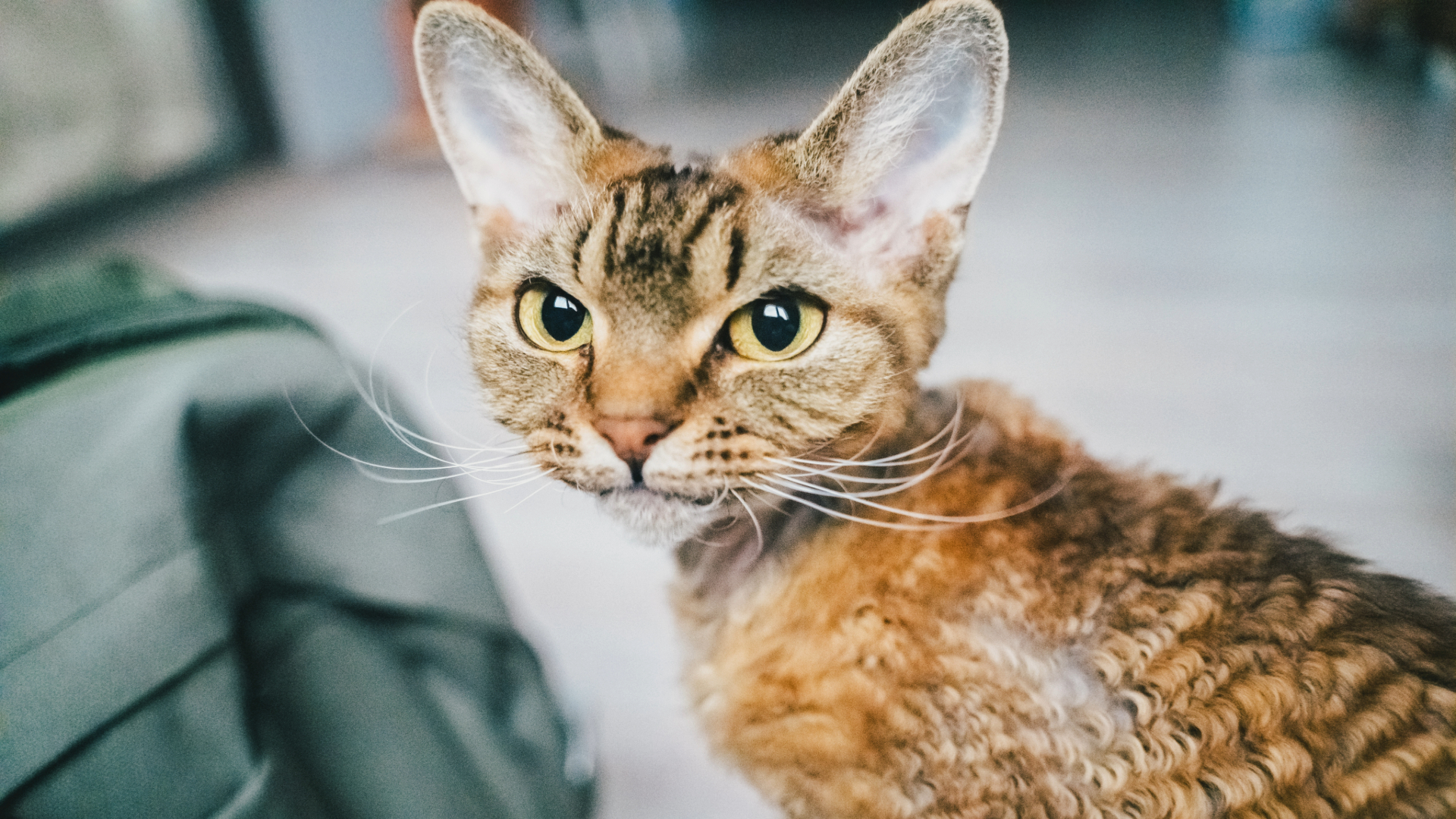
Nicknamed Pixie cat because of its big ears, large eyes, and elfish face, you’ll have lots of fun with this mischievous and affectionate breed – even if you suffer from allergies.
While the Devon Rex’s coat has three layers and is soft and curly, they are short-haired cats, which means they have less fur than other breeds, and they shed less, so you’ll be able to play with them and receive lots of cuddles. Playful, fun-loving, and curious, they love to spend time with their owners.
4. Cornish Rex
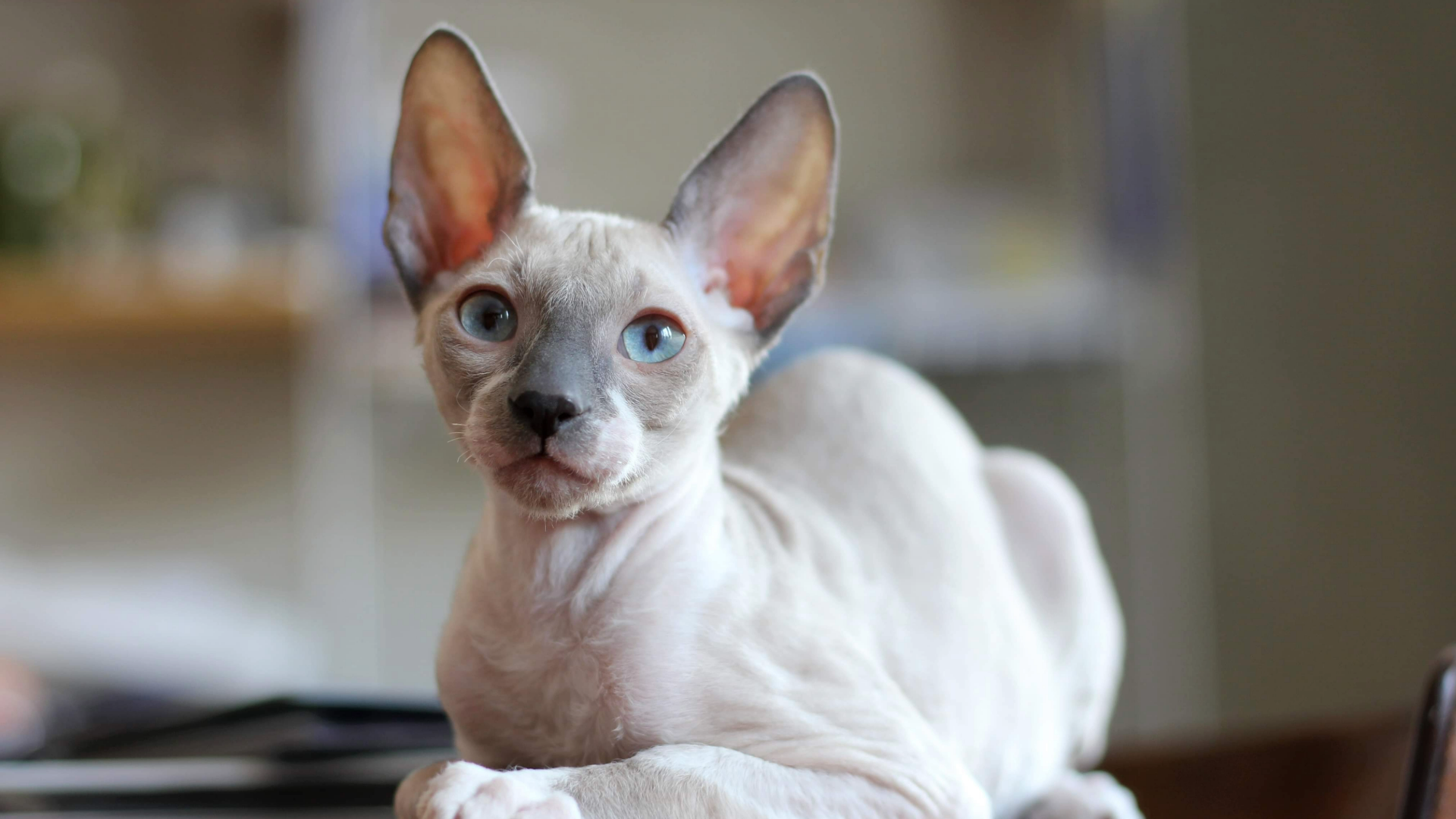
The Cornish Rex is another short-haired “hypoallergenic” breed that doesn’t shed as much as other cats, although you will need to bathe them as oil does build up on their skin.
You’ll want this affectionate cat on your lap as its single-layer coat is soft like suede and will keep you warm with its cuddles. But the slender and athletic cat is also a social, active, and inquisitive breed. They love to play and leap – you can even train them to fetch.
5. Siberian
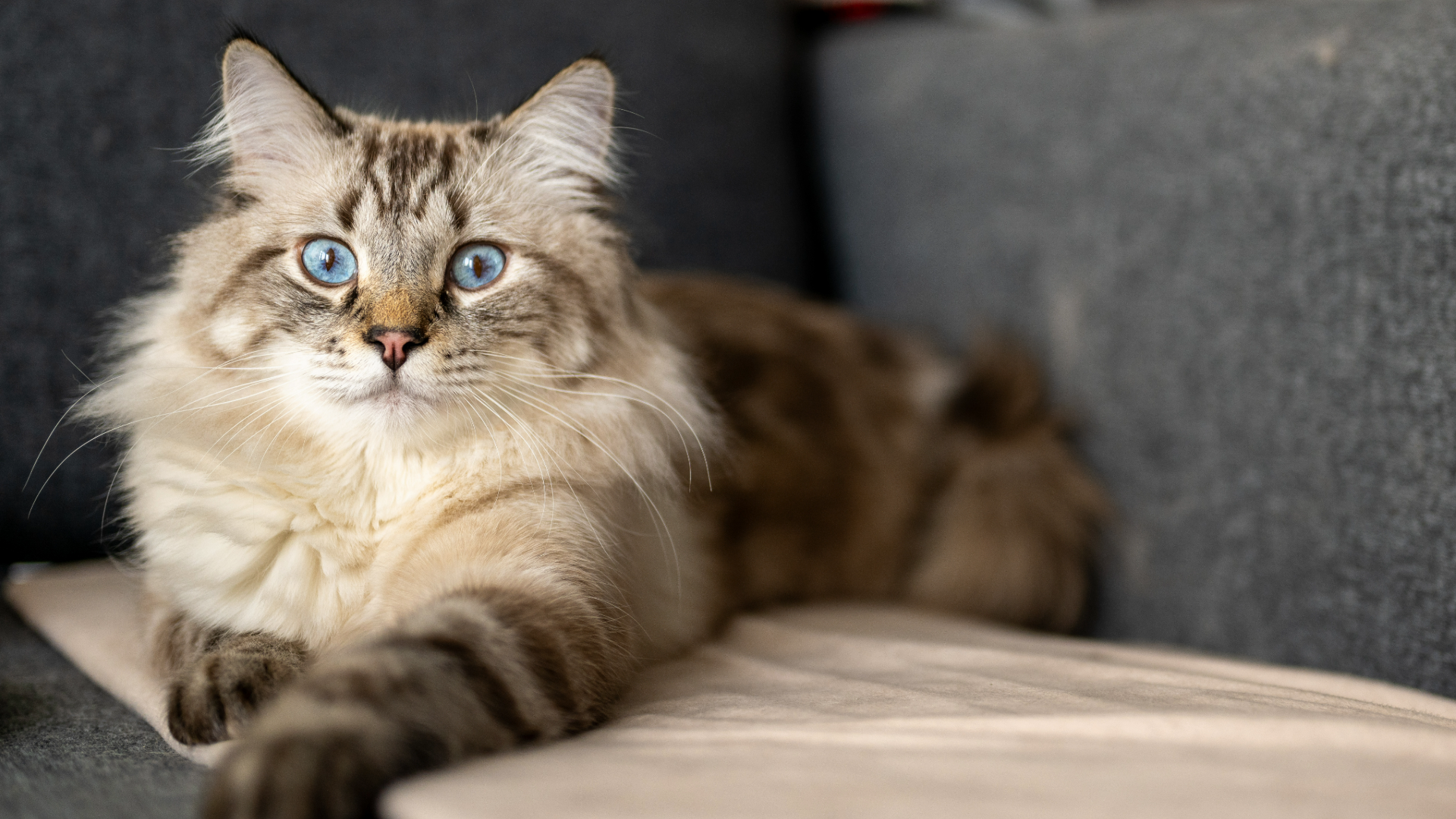
It may surprise you that the semi-long-haired Siberian is often referred to as a “hypoallergenic” breed.
While it has a thick, three-layered coat adapted for the Siberian climate, this affectionate cat has low levels of the Fel d 1 protein, so you can give it plenty of snuggles – although it will still need regular brushing throughout the week.
The Siberian is an agile and playful breed and not only loves its owner, but also gets on well with other cats, dogs, and children.
6. Sphynx
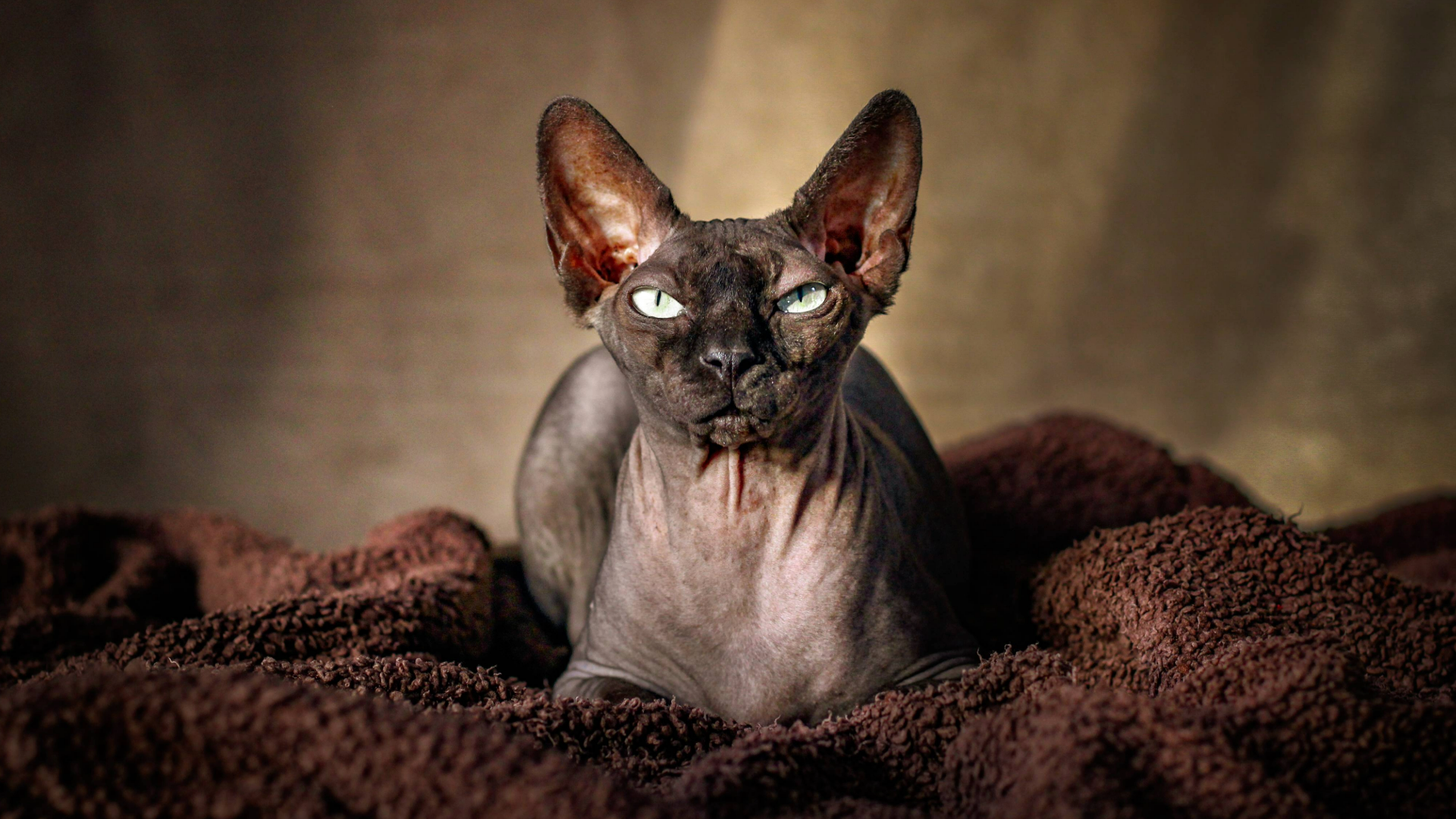
It’s no surprise that the Sphynx is on this list. This unique cat is a hairless breed, making it super allergy-friendly. But while its lack of coat means it won’t need brushing, the breed still needs frequent baths or sponging down to stop oil buildup on its skin.
The Sphynx may not be furry, but it still enjoys hugs, and you will too, as their skin is warm, making them like your own personal hot water bottle. Other than affection, the breed is very lively and loves attention, but can also be a little mischievous.
7. Russian Blue
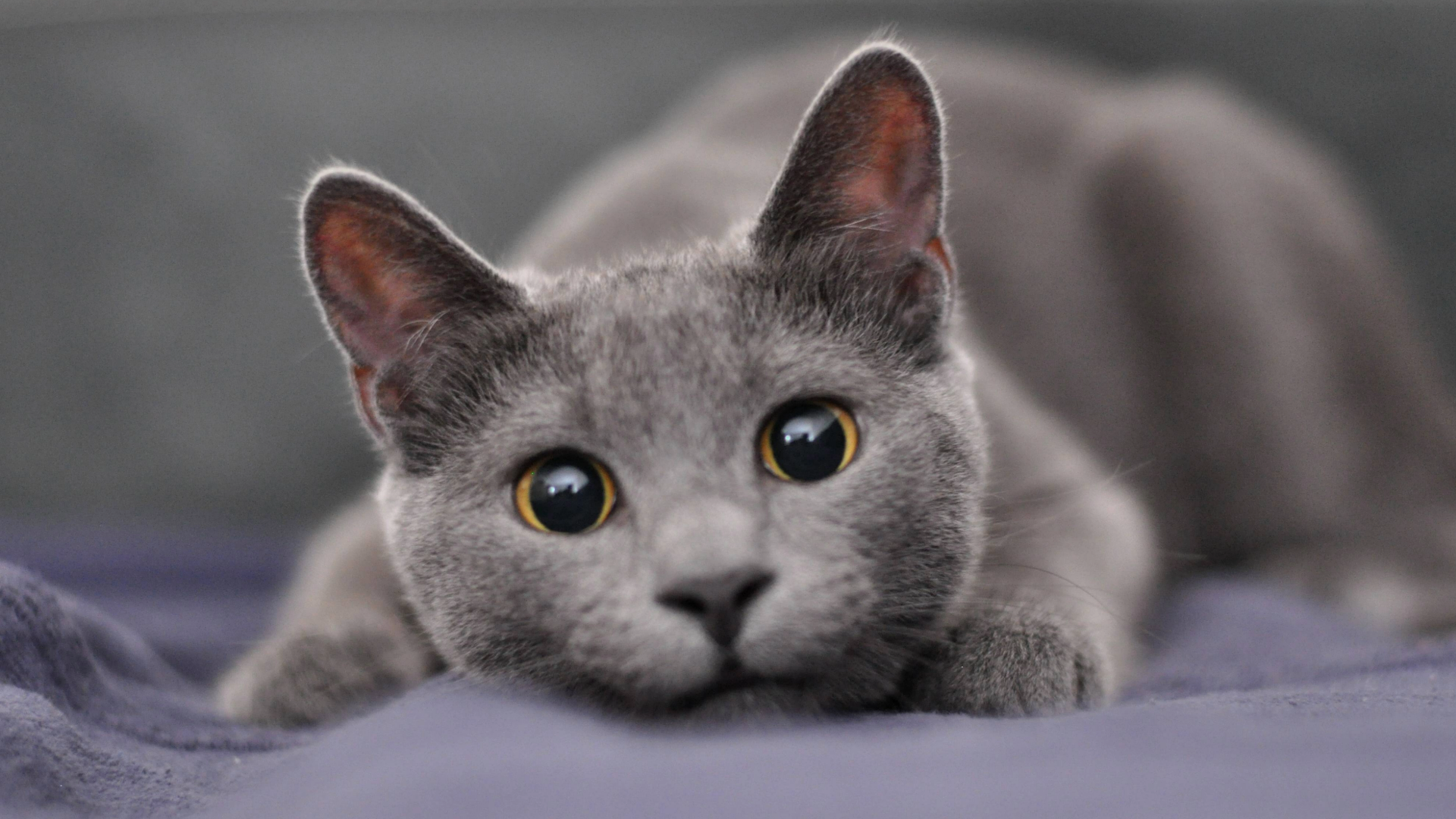
Easily identifiable with its soft, silvery grey coat and piercing green eyes, the Russian Blue is also allergy-friendly.
Despite its dense double coat adapted for the harsh climate in Russia, the short-haired breed does not shed a lot and has low levels of the allergen proteins, making it a great choice for a pet.
They’re not only lovable, but intelligent and playful. They’ll come greet you at the door, sit with you, and may even learn to play fetch.
8. Oriental Shorthair
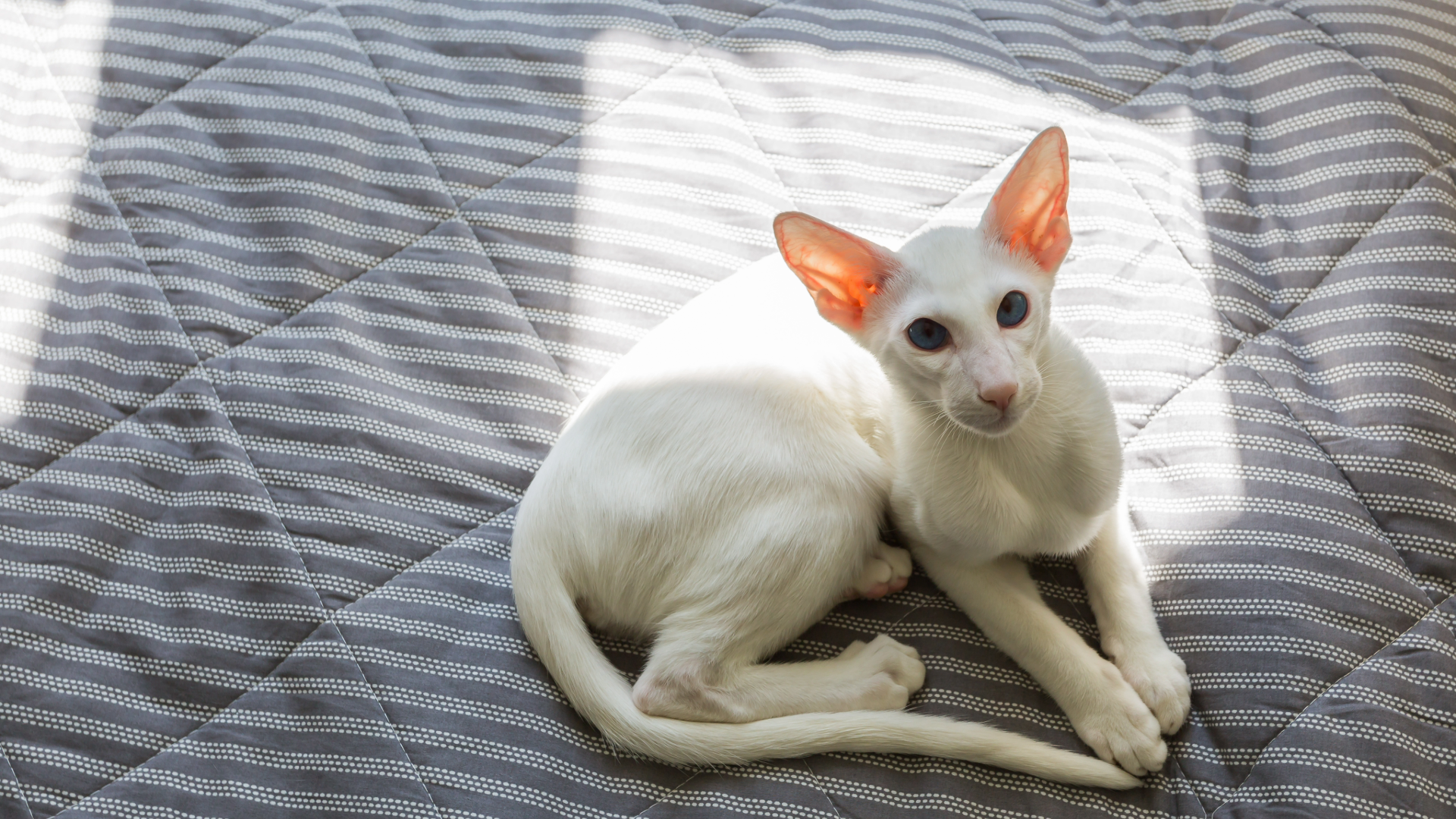
The oriental shorthair has fine, silky fur, which can be short or long and comes in a multitude of colours. This breed doesn’t need a lot of grooming and sheds very little, making it a perfect pet for allergy sufferers.
This attention-seeker has lots of energy and loves to entertain, so it’s not a good idea to leave it home alone for too long, and you’ll want to make sure it has plenty of toys to play with.
9. Bengal
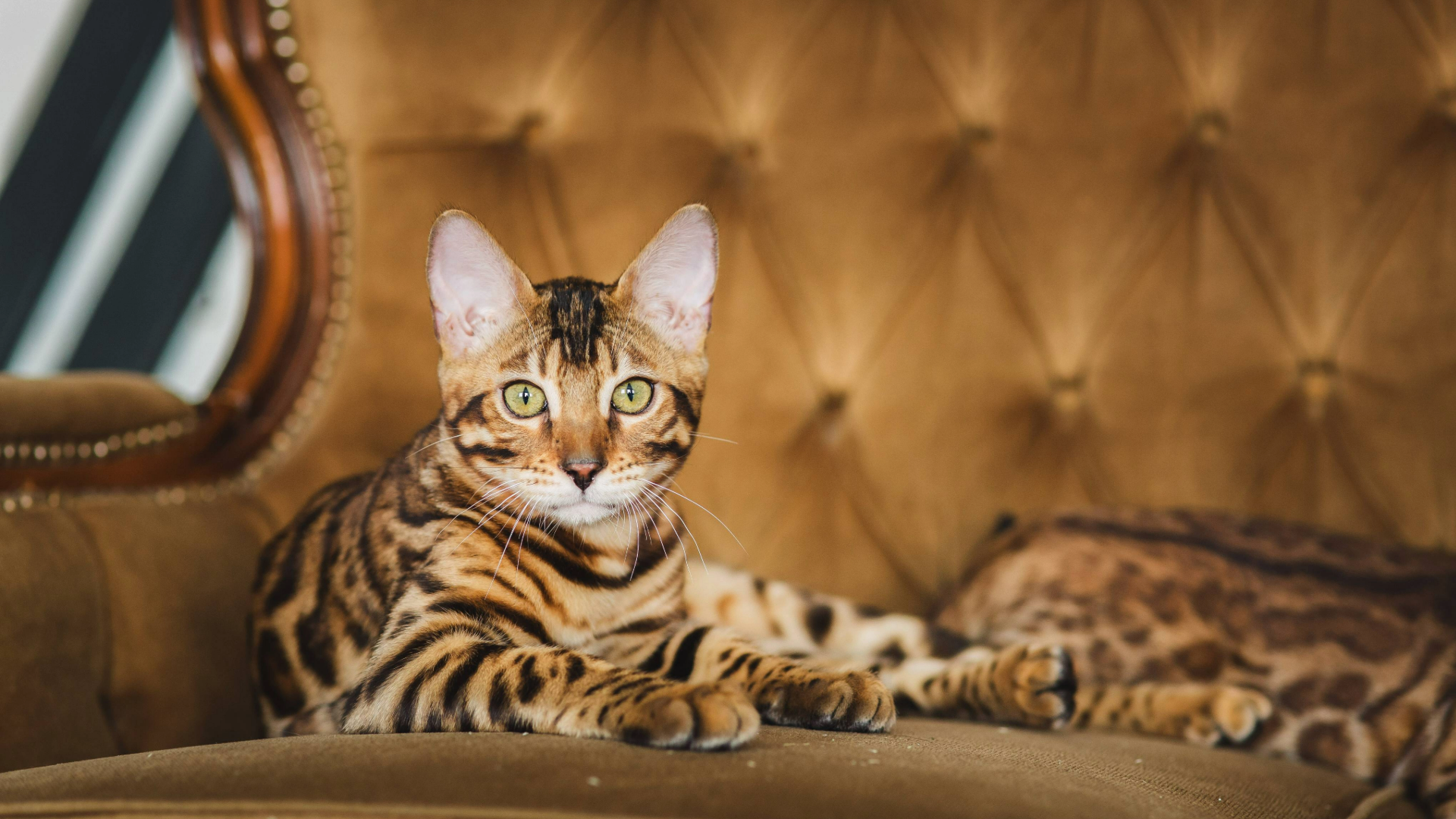
This short-haired cat stands out with its thick, spotted coat, as it looks like a wildcat. Not only beautiful, the Bengal's coat doesn’t shed as much as other breeds, making it easier to keep your allergies at bay.
While they’re sweet-natured and affectionate, the breed is also very active and energetic, sothey will want space to climb, jump, and run around, but they’ll be lots of fun as pets. They like company as they will want to play, but if there are kids in the house, it's best to introduce them as kittens.
10. LaPerm
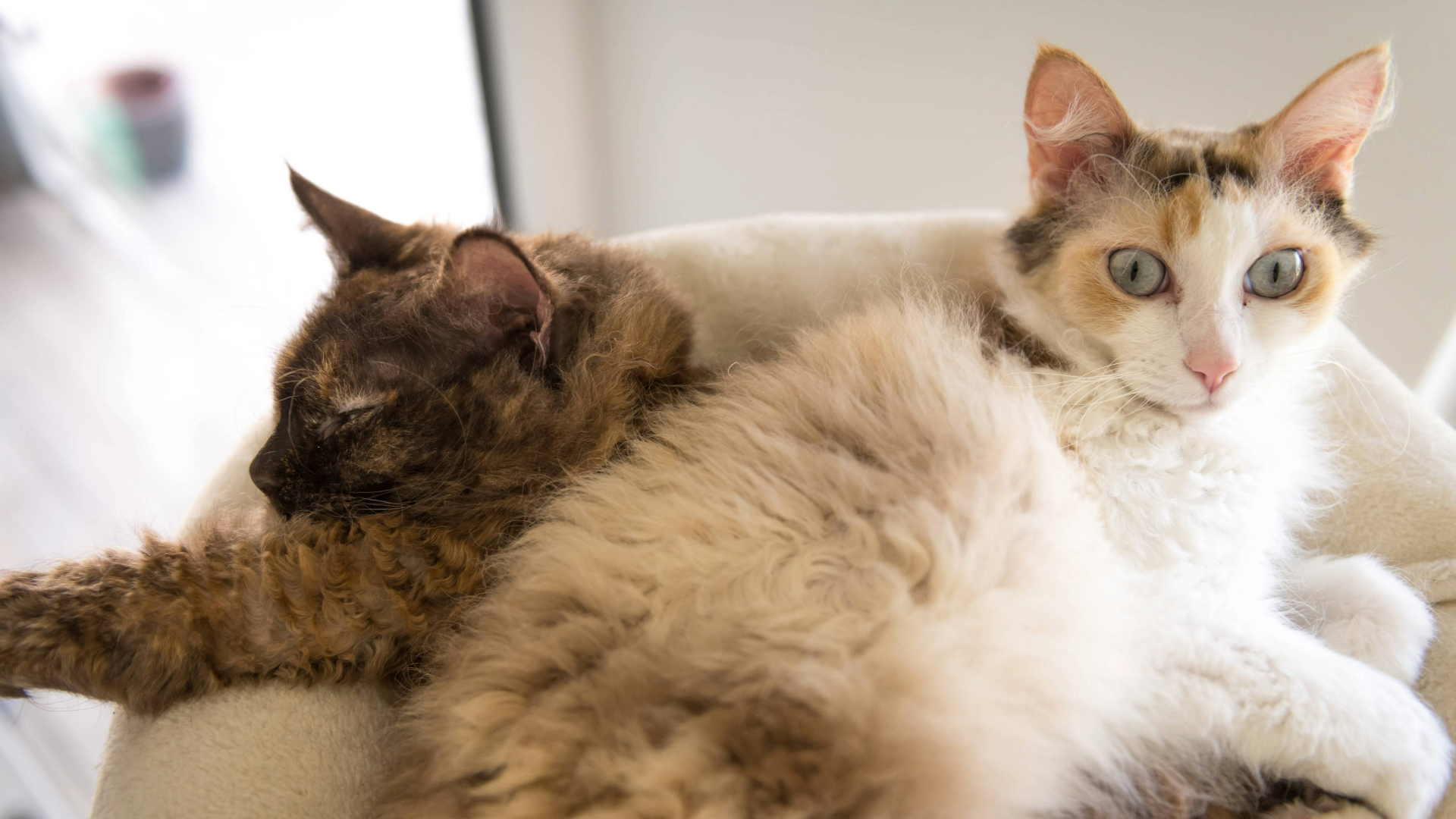
Known for its curly coat, the LaPerm is another surprise on the list of “hypoallergenic” breeds. Despite its fluffy coat, this breed is quite low-maintenance, doesn’t shed much, and its curls keep in the dander, making it easier on the eyes and nose.
The lovable breed makes a wonderful lap cat, but is also quite active, and when you’re up and about, will follow you around. They make good family pets and get on well with children and cat-friendly dogs. Just be careful not to let younger children pull at its curls.
11. Burmese
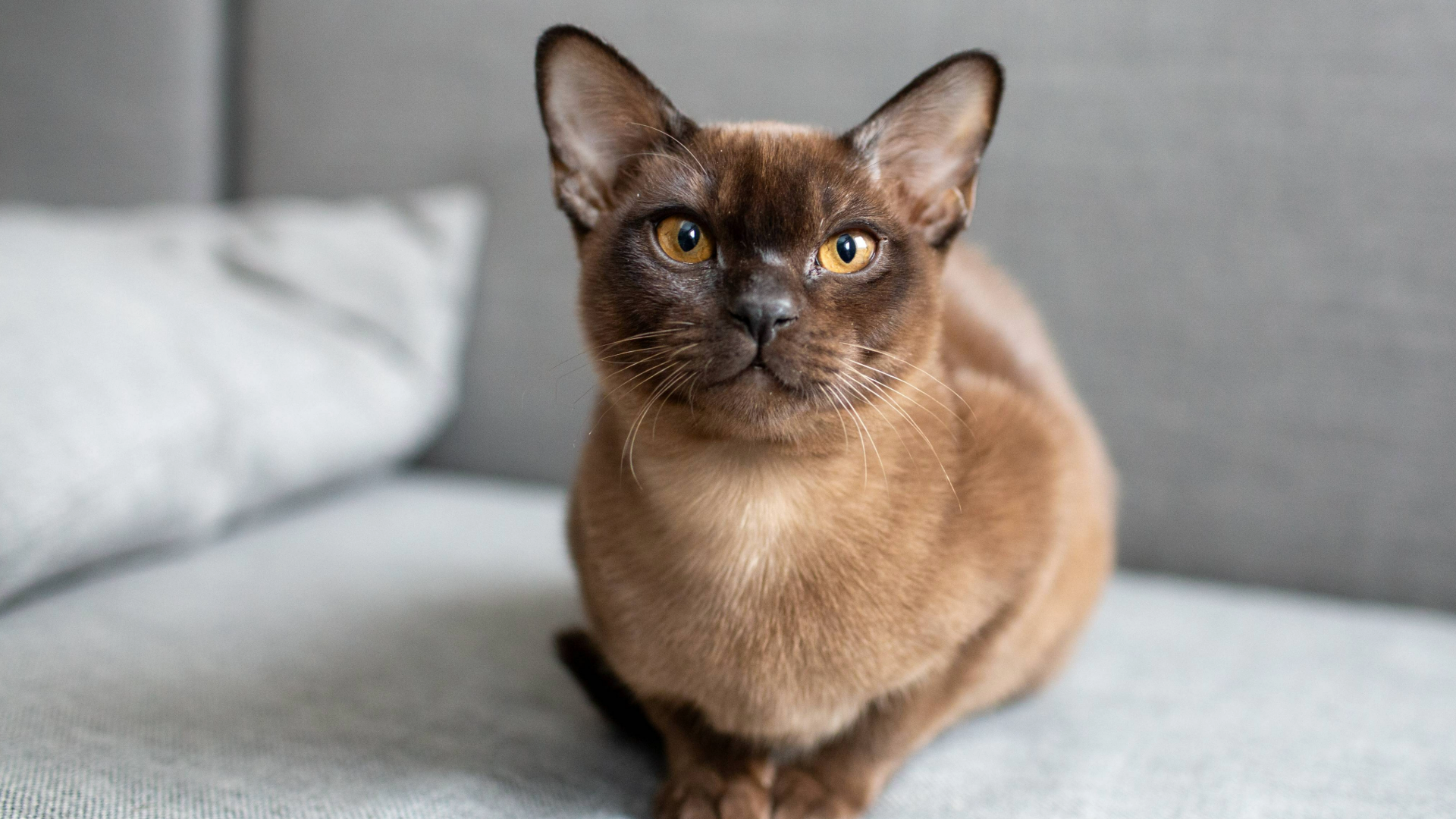
Its inclusion is probably less of a surprise than the others on this list. Another shorthaired breed, Burmese cats shed very little – they’re one of the world’s lowest-shedding breeds, in fact, making them an ideal proposition for allergy sufferers.
This is just as well, as they’re incredibly fond of humans, so they’ll be spending a lot of time in your immediate vicinity. Obviously, it’s not guaranteed that you won’t react to them, but as far as hypoallergenic cat breeds go, they definitely represent a low-risk option in our opinion.
12. Siamese
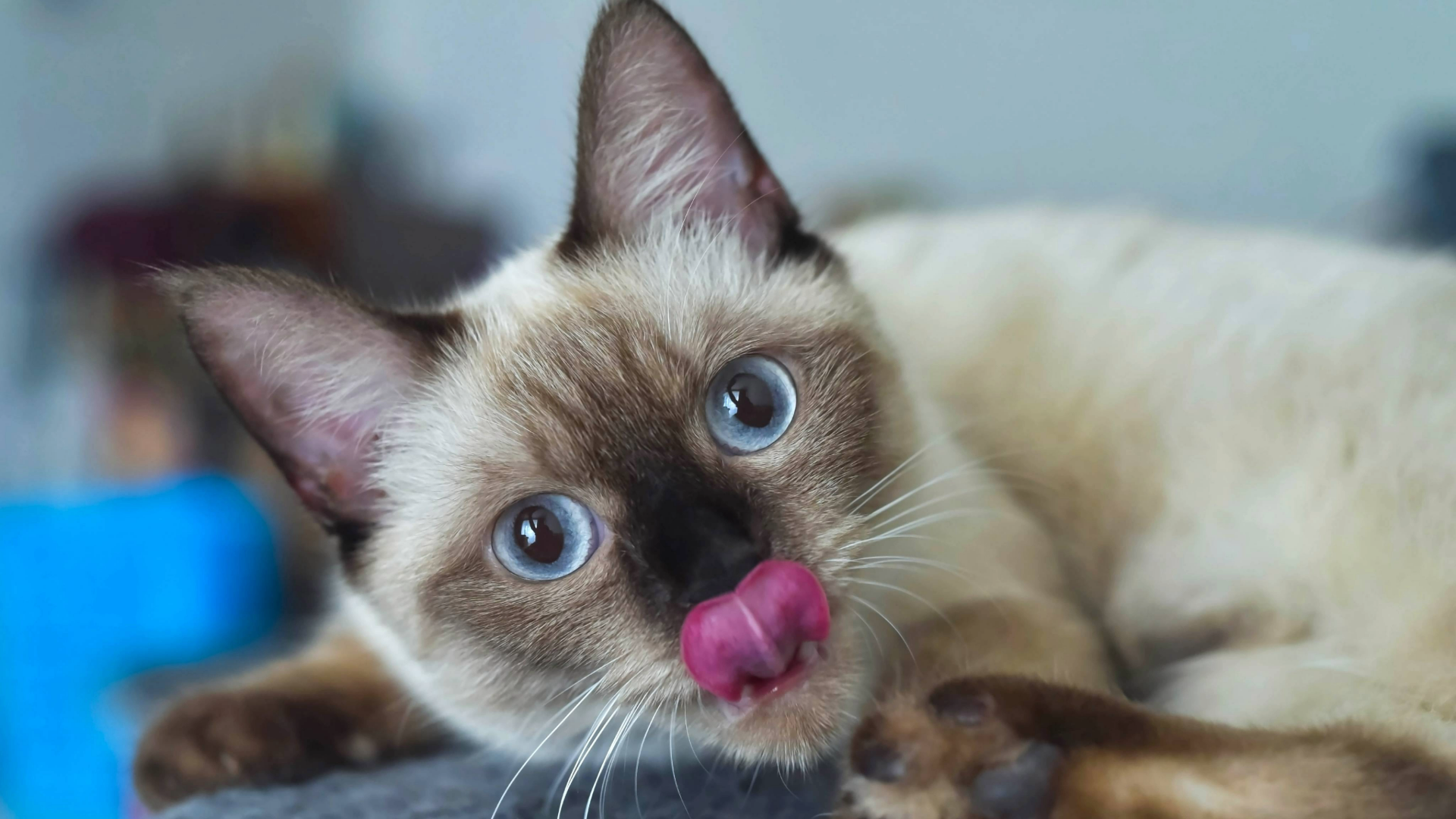
If you were worried that some of the breeds on this list were a bit obscure, here’s a much more recognizable hypoallergenic cat breed for you. While their fur isn’t as short as that of the Burmese, the Siamese produces less of the Fel d 1 protein, which can cause allergies in humans to flare up.
Moreover, they shed a lot less than other breeds, which makes them ideal for people who are considered low to medium on the hypoallergenic scale. Their fur length probably means they aren’t the most hypoallergenic cat breed around, but they’re definitely a viable option for those whose allergies perhaps aren’t the most pronounced.
How to manage cat allergies
While choosing a “hypoallergenic” cat breed will give you the best chance of avoiding the sniffles, there are other things you can do to help.
1. Regular cleaning: First, you’ll want to keep your house clean and always have your vacuum to hand (this one from Amazon is my all-time favorite for pet hairs). Keep the windows open and close off certain rooms to your pets.
2. Regular rooming: Using the best cat brushes, make sure someone is brushing them and getting rid of the excess hair.
3. Anti-allergy cat food: Dr MacMillan says, "I’ve heard some promising reports from pet owners about the anti-allergy cat foods (like this one from Amazon), which change the protein Fel d 1 so it’s no longer recognized by the human’s immune system, so if you have allergies and this diet is an option for your cat, it could make a real difference."
4. Allergy medication: Antihistamines are available over-the-counter and can help with your symptoms – just be sure to consult your doctor first.
However, Dr MacMillan says: "While good hygiene, regular vacuuming, antihistamines, and lots of grooming (by someone who’s not allergic) can help, those with more severe signs will still be affected."
Edited by Georgia Guerin and Alexis De Leaver.



